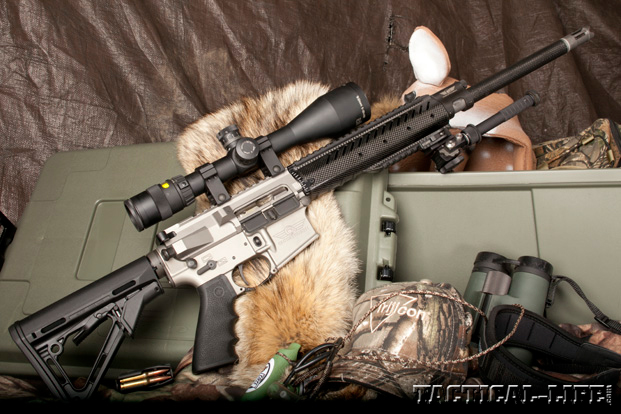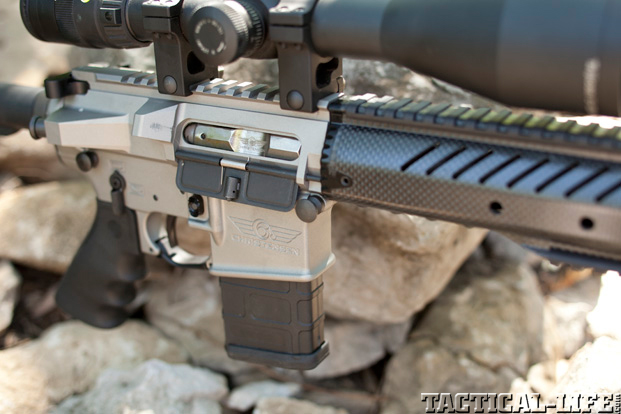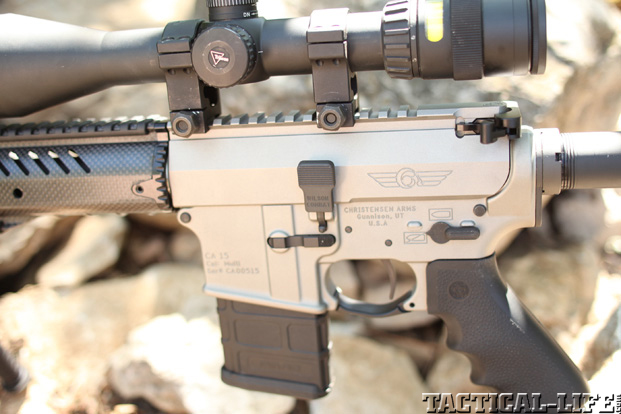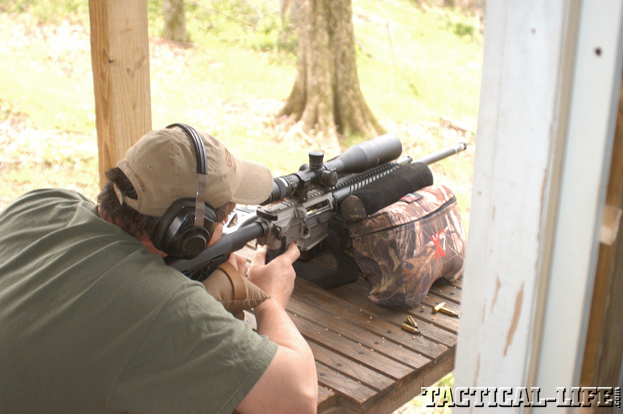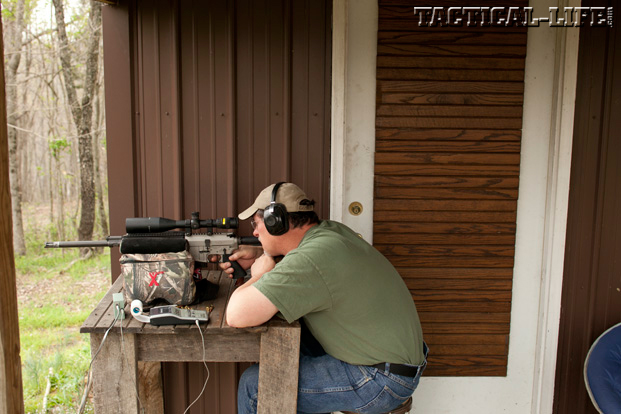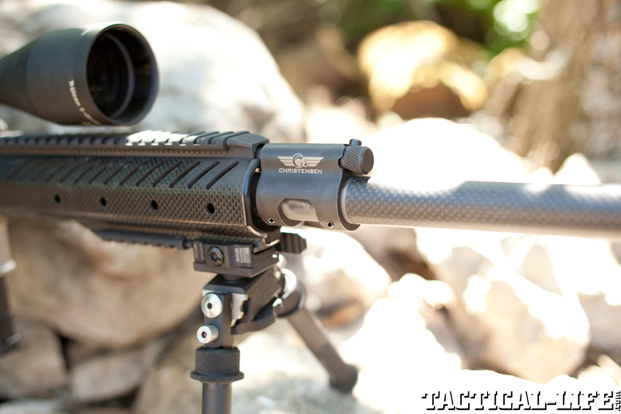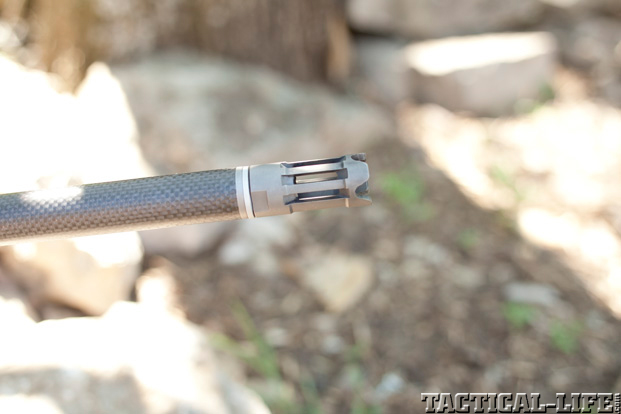It’s no revelation that an AR chambered in .223 is a good cartridge/rifle combination for hunting coyotes and other varmints. But sometimes a heavier bullet is apt for long-range shots. And if you want to cover a lot of ground on foot, a lightweight rig makes perfect sense. These two attributes make Christensen Arms’ CA-15 Predator chambered in 6.5 Grendel a potent rig.
My first exploration into 6.5 Grendels began a couple of years ago, but I’ve been a fan of .264 caliber bullets for many years. An AR-15-sized rifle chambered in 6.5 Grendel is one of my favorite choices for hunting big whitetails. The Grendel’s flat trajectory and retained energy at longer ranges makes it ideal for coyote too. I like to coyote hunt with a whitetail rifle—for me, hunting these predators is an extension of deer hunting. They’re linked in several ways. During late winter and early spring, when I’m cruising for coyotes, I’m hunting for sheds, too. During the summer when I’m wailing on a fawn distress call to lure coyotes into gun range, every successful hunt raises the odds that the fawns in the area will survive to adulthood.
Going For Grendel
The 6.5 Grendel, built especially for ARs, isn’t exactly new to the firearms scene, but it had been for me. The 6.5 Grendel/AR combination has the terminal ballistics I want from a .264 bullet, and the choice of AR packages is pretty broad. Almost two years ago Grendel fans got a real boost when Hornady began offering loaded factory ammunition. Their 123-grain loads improved ammunition availability and have helped ease the cost of sending rounds downrange. In July 2010 Hornady shipped 500,000 rounds of 6.5 Grendel, which sold out in three days. By late August they put them back on line and loaded more to keep up with demand. Earlier this year Bill Alexander—the cartridge’s designer—made it open-source, enabling other gun manufacturers to freely chamber their rifles in 6.5 Grendel. Making it open-source also qualified the cartridge for SAAMI certification, which is a huge step in making it a widespread favorite.
Advertisement — Continue Reading Below
Currently Alexander Arms offers six different loads using Lapua brass. The lightest bullet Alexander Arms offers is a 100-grain Berger HPBT—the heaviest, a 130-grain Swift Scirocco. A box of 20 rounds will cost $30 to $42, depending on load. Wolf also offers a 120-grain hollow-point boat-tail 6.5 Grendel load for about $13 a box, which makes target practice more affordable.
During a recent coyote hunt in Oregon with the Trijicon folks, I was reminded that a .223 isn’t always the best choice for hunting these cagy beasts. The outfitter failed to tell anyone that we weren’t having much luck because the coyote females were sticking to their dens after giving birth to spring litters—the males weren’t leaving the females either. It wasn’t surprising that the only stationary target I got all week was the head of a coyote sitting 710 yards away, transfixed on our calls across the brush-choked valley. I can’t say for sure that I would have made the shot with a 6.5 Grendel, but I like the ballistics a lot better than those of a .223.
At the extended ranges the 6.5 Grendel is about 10 percent flatter in trajectory and lands with more than twice the wallop. Add some wind to the equation and the case gets stronger. For several weeks I toted Christensen Arms’ CA-15 Predator in 6.5 Grendel while scouring the local soybean fields and trying to call a coyote into range. Its surprising light weight and superb accuracy make it a comfortable and deadly package.
Advertisement — Continue Reading Below
Christensen’s 6.5
The first thing you notice when you pick up this rifle is its light weight—6 pounds 13 ounces without an optic. That’s not an outrageously low weight until you take a look at the nearly 1-inch barrel contour. This barrel is a 20-inch carbon-wrapped featherlight tube with a 1-in-8-inch twist rate. A titanium flash suppressor tips the muzzle. Christensen Arms history reveals how the company began specializing in carbon fiber barrels. The owner of the company, Roland Christensen, has been in the prosthetic business since 1985, according to a Christensen Arms representative. His prosthetic limbs have been made primarily out of carbon fiber. Christensen’s designs and manufacturing techniques have pushed his feet to the top of the prosthetic market. The Freedom Innovations feet are fruits of his labor. He also has an aerospace company that manufactures carbon fiber satellite dishes, airplane wings, helicopter parts and much more.
Christensen and some of his employees where brainstorming when the idea to try making a carbon fiber gun barrel arose. It was tested in 1995 and proved to worth turning into a business. Christensen Arms was formed and set up to make high-end custom bolt-action rifles that were lightweight and delivered precision accuracy. In 2010 Christensen Arms broke into the tactical market by offering its first version of the Christensen Arms CA-15. This rifle is built on an AR-style platform and utilizes Christensen Arms’ carbon handguard and carbon barrel along with other high-quality components.
The barrel building process applies carbon fiber to the barrel in both unidirectional and cross directional manner to yield best characteristics of strength and stiffness from the carbon fiber material. Carbon fiber is five times stiffer than steel, four times stronger and five times lighter than steel per weight. The advantages are obvious. It gives you bull-barrel accuracy with the weight of a sporter-type rifle. Lightweight and accurate, you can’t beat it.
Advertisement — Continue Reading Below
To further reduce weight, this rifle sports an attractive carbon fiber handguard with a full-length Picatinny rail. The bottom of the handguard also sports a molded 5-inch rail on the forward portion that makes a handy attachment point for a bipod. The handguard features diagonal vents as well as four evenly spaced round holes on the sides, which can serve as attachment points for accessory rails.
Underneath the slick-looking handguard are the working parts of a piston drivetrain by Adams Arms. This particular piston system is proven as a retro-fit for direct gas impingement ARs as well as an original-equipment builds for new weapons. The piston system’s reliability has led several AR manufacturers to copy the design or incorporate it into their own rifles.
The bolt carrier is a stainless Adams Arms design with a magnetic-particle-tested bolt. Today’s Christensen Arms CA-15 receivers are anodized and then Cerakote treated on the outside to add even more durability. Holding the upper and lower receivers are a pair of pins with enlarged heads to ease disassembly. The dustcover has a nice added touch of the caliber etched on its outside surface. The charging handle is a BCM Gunfighter model, and this rifle has a forward assist. I’ve pondered the idea of needing a forward assist on a hunting AR. Some manufacturers insist that this feature is an unnecessary function. I have come to find that a forward assist comes in handy if you are trying to stealthily load the weapon. Instead of hitting the bolt release latch and letting it slam home loudly on a live round, it is much quieter to ease the bolt forward and use the forward assist to finish closing the bolt on a live round.
Advertisement — Continue Reading Below
The lower receiver on the Christensen Arms CA-15 gets a few more parts that would be considered upgrades on other AR-type rifles. The magazine release latch is a Wilson Combat model with an oversized release-lever plate. The safety is ambidextrous too. An oversized Magpul triggerguard and a Magpul CTR collapsible stock are also included. The pistol grip is Hogue’s overmolded version. Completing the lower receiver is a Timney 4-pound pull trigger.
Range Workout
To ascertain the accuracy potential of the Christensen Arms CA-15, I mounted a Trijicon Accupoint 5-20X scope with a pair of Trijicon rings. Groups were fired on different days with four factory loads, and I gathered velocity data on the same occasion with a chronograph. Firing was done from a stable bench using a Bulls Bag rest.
I fired three five-shot groups at 100 yards with each load. Alexander Arms’ 123-grain Lapua Scenar loads, and learned that this is the gold standard for this rifle, turned out the best results: The average group was calculated to be 0.739-inch, and the smallest group measured 0.356 inches with. The average velocity was of 2,515 FPS (feet per second), the standard deviation was 17 FPS and the extreme spread was 38 FPS.
Advertisement — Continue Reading Below
Hornady’s 123-grain AMax loads average group measured 1.126 inches. The smallest group measured 0.928 inches. The standard deviation was a great 10 FPS, and the extreme spread was 27 FPS for a load that averaged 2,445 FPS.
Alexander Arms’ 120-grain Barnes TSX offerings averaged 2,370 FPS. Again, the standard deviation was a low 11 FPS, with the extreme spread of 26 FPS. The smallest group measured .884, and the average nestled in at 1.038.
Wolf Ammunition’s 120-grain load averaged 2,385 FPS. The standard deviation for this load was 16 FPS, and the extreme spread was 42 FPS. The average group size for this load was 1.502, with the smallest measuring 1.256.
Advertisement — Continue Reading Below
Next time you’re varmint hunting, give this superbly accurate lightweight 6.5 Grendel/AR rig a try. You will be pleasantly surprised (unless your quarry decides to take the day off). For more information, visit christensenarms.com or call 888-517-8855.
EDITOR’S NOTE: The Christensen Arms Predator referenced here was “new” for only a short time during the time of initial publication. The newest variant is known as the CA-15 RECON which now includes carbon-fiber handguard with integrated carbon Picatinny rails.
